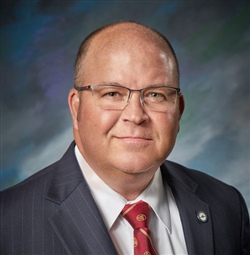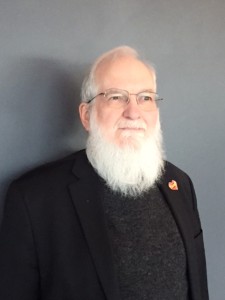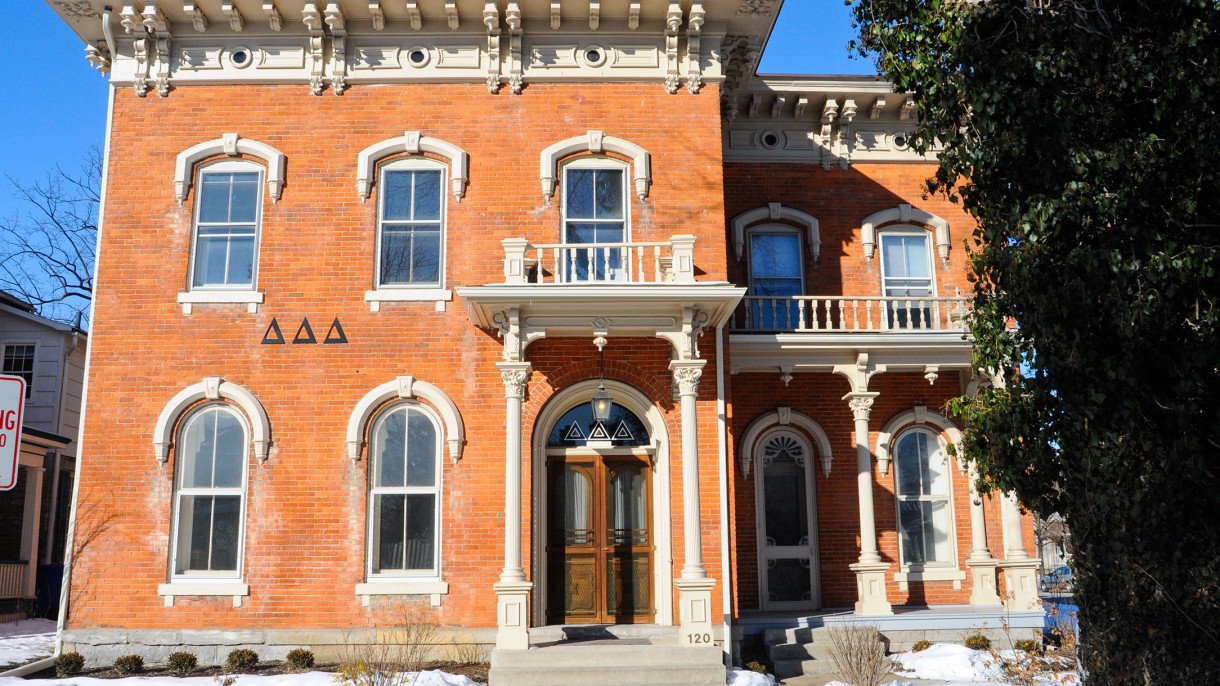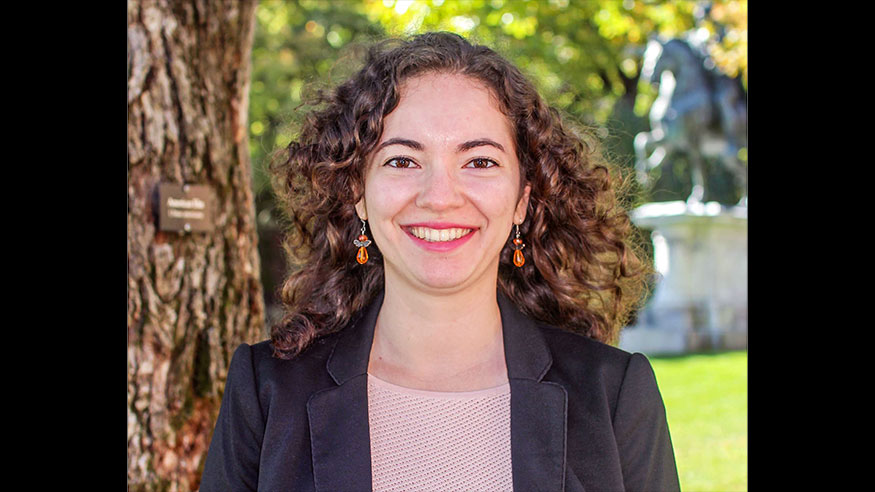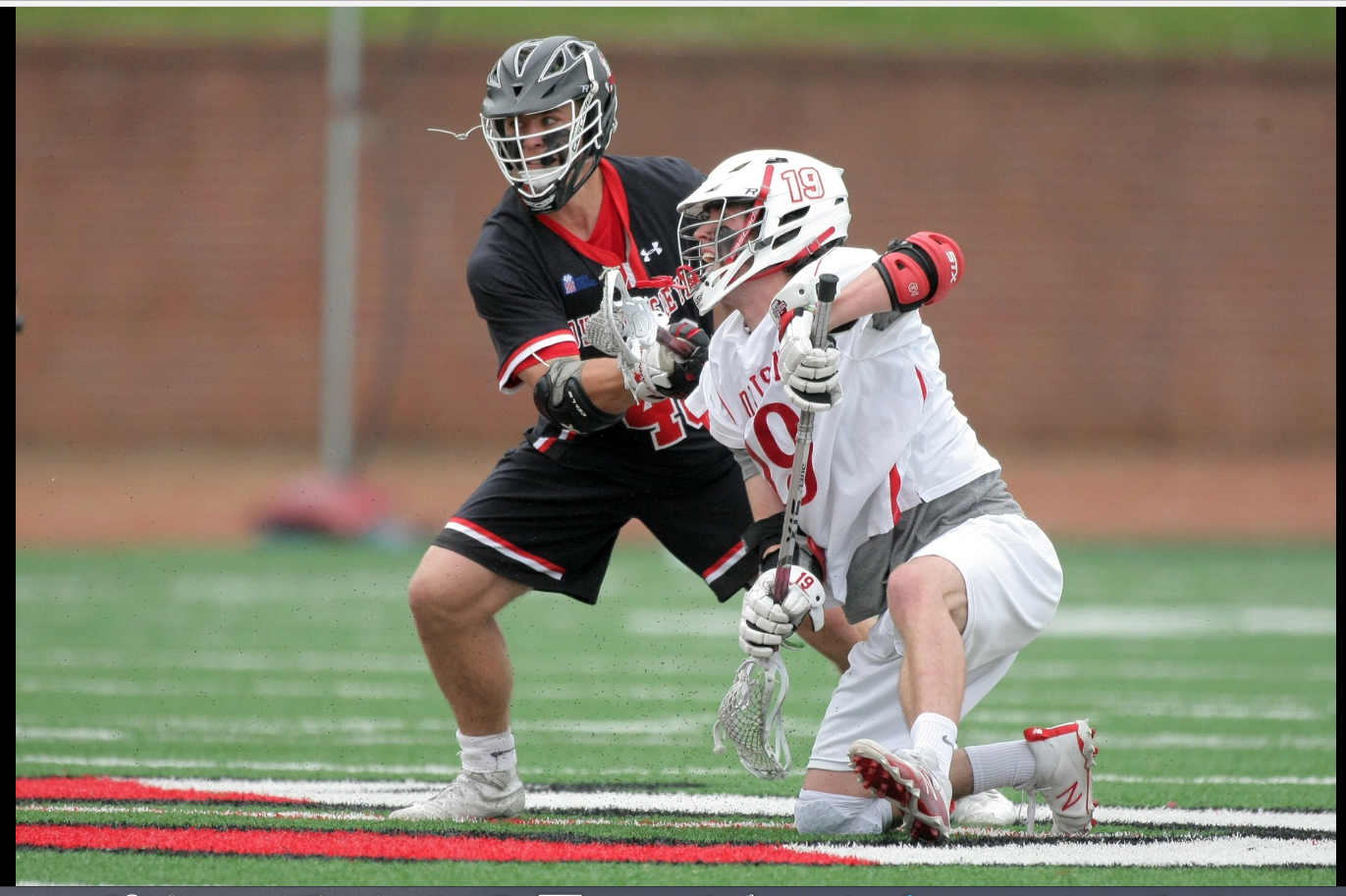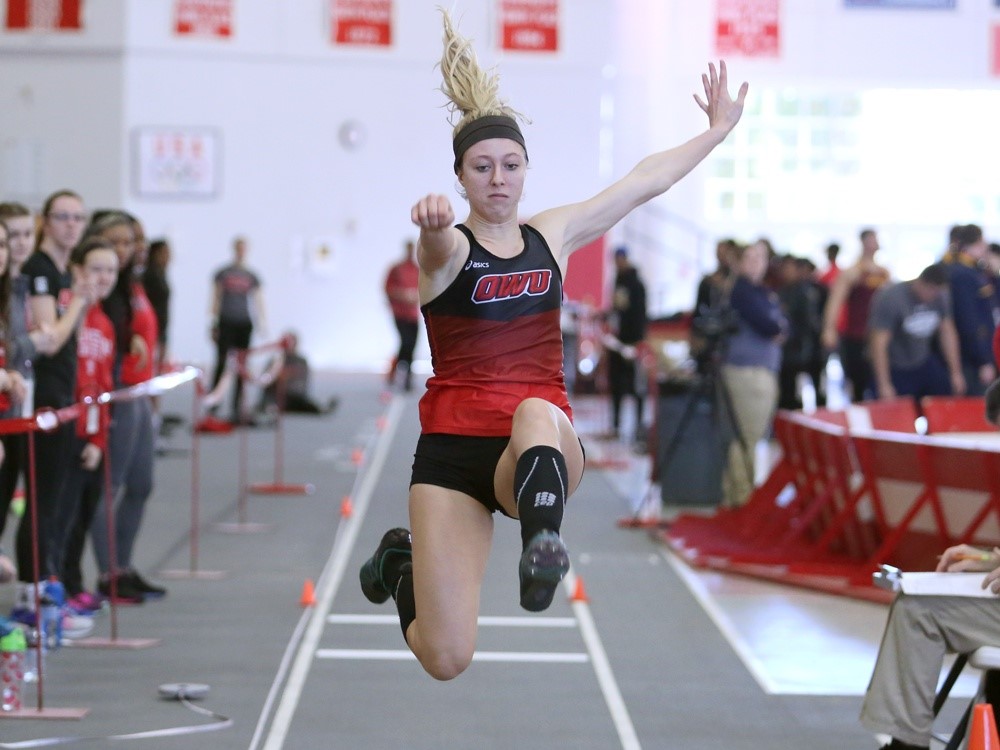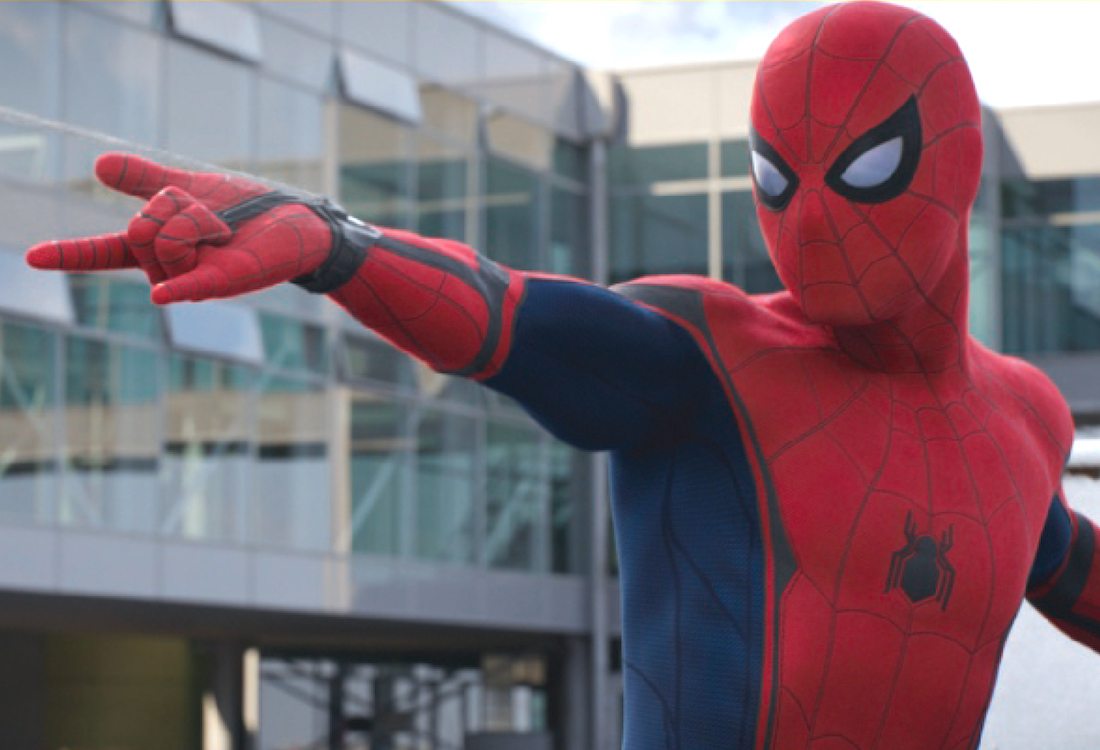By Gopika Nair, Transcript Correspondent
The pale, yellow walls inside the Strand Theatre hold pieces of history.
A poster advertising the 1938 version of “Marie Antoinette,” starring Norma Shearer and Tyrone Power, hangs on the far right, near where Tracey Peyton, the managing director of the Strand Theatre sits. In the middle is a poster of Victor Fleming’s “Gone with the Wind.”
Scattered on the walls throughout are numerous framed certificates from the Delaware Gazette, recognizing the Strand Theatre as the “best date place” and “best family fun entertainment.”
Affixed by the entrance is the Strand Theatre’s opening announcement, published by the Journal-
Herald on April 8, 1916.
“To the public: Your handsome new motion picture home will be opened on the above date with a program of clean, wholesome, highly interesting and educational moving pictures,”
the first line reads.
But since Peyton began her term as the managing director of the Strand Theatre in 2015, she has lost count of the number of times someone has told her, “Oh, you’re a real movie
theatre.”
“The very thing that makes [the Strand] special is the thing that’s our Achilles’ heel, both to the public and the studios,” Peyton says.
Marketing the Strand Theatre is tough despite the fact that it has operated for 102 years and is the tenth longest operating movie theatre in the U.S. In addition to being nonprofit, the theatre currently has three screens and most moviegoers are charged $5 a ticket, a price that’s often paltry to break even.
“We sometimes can’t get the film we want because we can’t produce the revenue the studio wants and if we can’t produce the revenue the studio wants to see, we can’t get the
[movie],” Peyton says.
She cuts me off before I can finish asking whether the Strand Theatre’s historic reputation helps her and her booker get the movies they want.
“They don’t care,” she says. “I know where you’re going with that and they don’t care.”
Peyton’s booker represents 300 theatres across the nation. Citing the upcoming summer film “Ocean’s 8,” produced by Warner Brothers, as an example of a movie that could either do
well or poorly in Delaware County, Peyton says the studio might tell the booker that only 80 of the theatres he represents can play “Ocean’s 8.”
“They protect the radius like they do with radio stations,” Peyton says, which means that Marcus Crosswood Cinema in Columbus, Rave Cinemas in Polaris and the Strand Theatre are unlikely to get “Ocean’s 8” all at the same time.
Instead, the studio will give the movie to theatres that are guaranteed to generate the best revenue, such as Rave Cinemas, a theatre complex.
“It doesn’t matter that we’re [more than] a century old, it doesn’t matter that we’re nonprofit,” Peyton says. “What matters is how many people we can get to these shows, how long we can keep it there and [whether] it will give us the returns we want because … there is a loose expectation that each theatre has to provide or produce a certain amount of revenue.”
While the Strand Theatre tries to appeal to Ohio Wesleyan students, its main demographic is families in Delaware County. Keeping that in mind, Peyton and her booker consult past history to determine what kind of films generate the most revenue and book films accordingly.
Though nearly every Best Picture Oscar-nominated movies have been shown at the Strand in the coming weeks, Luca Guadagnino’s “Call Me By Your Name” did not snag a spot
on the theatre’s marquee.
“It would never flow in [Delaware] because it’s a conservative city, but I would love to see it,” Peyton says.
By contrast, “Love, Simon,” an upcoming film about a closeted 17-year- old boy might do well. Though the two movies share similar themes, “Love, Simon” contains a bullying subplot.
“Anything with kids and bullying resonates [here],” Peyton says.
Family, superhero and animated movies are Delaware’s top picks. Additionally, based on a recurring pattern, Peyton says Delaware is a hero-oriented town and movies such as “American
Sniper” and “15:17 to Paris” did well.
“I have tried to explore different movie niches [to appeal to OWU students], but … we can’t [play] cult favorites because as a first run theatre, we have to protect our primary times for Sony, Universal and Warner Brothers,” Peyton says.
Peyton’s attention is diverted when she catches sight of an employee working, projectionist Peyton Ennis.
“Any word on that video?” she asks Ennis.
“What video?”
“That you’re doing for—”
“Oh, I really haven’t had any time.”
“Do you think we should try it?”
“Well, I don’t know.”
“‘The Room’ and then—”
After a pause, Ennis grins. “I think we should try those movies, yeah.” Ennis goes back to standing behind the ticket counter and Peyton explains that the two of them have been toying with the idea of showing Tommy Wiseau’s “The Room” and James
Franco’s “The Disaster Artist” as a double feature. “The Disaster Artist” shows the making of Wiseau’s “The Room,” which is simultaneously a cult-favorite and regarded as one of the worst
films ever made.
Getting the two films will cost the Strand nearly $800 and to break even, at least 160 patrons must attend.
Coming from a corporate background, Peyton says working at the Strand Theatre has been a different experience. Her last job was at the Nationwide Hotel and Conference Center in Lewis Center, but she has previously worked at the Rock and Roll Hall of Fame in Cleveland and the Pro Football Hall of Fame in Canton. While her past jobs provided her with an expense account, every dollar the Strand Theatre makes goes back into maintaining the building.
“But that’s what’s so charming about this place,” Peyton says. “Everyone here loves it and wants it to stay and do well, so we’re kind of like the underdog of movie theatres.”
OWU, too, has a strong connection with the Strand and has supported the theatre for several years. In 2002, OWU owned the Strand, but the university transferred the property to the Strand Theatre and Cultural Arts Association in 2006. But if the Strand Theatre and Cultural Arts Association stops operating as a theatre and cultural arts association, the property would revert
back to OWU, according to President Rock Jones.
“We remain very engaged and are grateful for many opportunities to partner with the Strand,” Jones says.
The university collaborates with the theatre to host various student events, encouraging students to seek employment, co-sponsoring the annual International Film Festival with OWU’s Film Studies program, among other partnerships.
Lynette Carpenter and Martin Hipsky, professors of English, both teach the Introduction to Film course at OWU. As part of the course, students are required to view select films, which
are screened at the Strand for $6. The movies selected are chosen by Carpenter and Hipsky and they change every year, according to Carpenter. Typically, the selection includes two to three American genre films, an adaptation, several foreign films and a recent independent film.
“The Strand is the only movie theatre within walking distance of the campus, and showing our films there allows students to see them as they were meant to be seen – on a full- size movie screen in an audience of others who are also watching and reacting to the film,” Carpenter says.
Though scheduling the film series can be challenging because of the Strand’s contractual obligation as a first-run theatre, Carpenter says OWU’s Film Studies program is fortunate to have the theatre’s cooperation.
“Few colleges can say that their introductory film students watch movies in an actual movie theatre,” Carpenter says.
While some might view high school or college as the most special part of their lives, several members of the Delaware community give that recognition to the Strand.
“The Strand is a part of their lives; it’s a part of their families; it’s a place where they’ve made memories,” Peyton says. “There no doubt in my mind that people, long after I’m gone, will continue to support this place because it’s important to them and it represents their history.”

